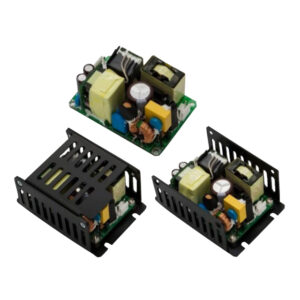 What are the differences and does it matter?
What are the differences and does it matter?
In the world of electronics, power supplies play a crucial role in ensuring that electrical devices receive the appropriate voltage and current for proper operation. However, not all power supplies are created equal. Different industries impose specific standards to ensure safety, reliability, and compliance with regulatory requirements. Two common standards that are often compared are ITE (Information Technology Equipment) power supplies and Medical grade power supplies.
This comparison will explore the differences between these two types, focusing on how their standards overlap and where they diverge.
Understanding ITE and Medical Grade Standards
ITE (Information Technology Equipment) Power Supplies:
ITE power supplies are designed for general use in information technology applications such as computers, routers, telecom systems, and office equipment. These power supplies comply with safety standards such as IEC 60950-1 or the more recent IEC 62368-1, which focus on the safety of electrical equipment used in office and industrial environments.
Key Requirements:
– Basic electrical safety for users and surrounding equipment.
– Protection against overvoltage, short circuits, and overheating.
– Electromagnetic compatibility (EMC) to reduce interference with other devices.
– Basic insulation between the input and output for user safety.
Medical Grade Power Supplies:
Medical grade power supplies, on the other hand, are held to stricter standards due to their critical applications in healthcare devices like ventilators, imaging machines, and patient monitors. These power supplies must meet IEC 60601-1, a standard that specifies safety requirements for medical electrical equipment.
Key Requirements:
– High electrical isolation to protect patients and operators from electrical shock.
– Strict limits on leakage current, which is critical for patient safety, particularly when devices are connected directly to the human body.
– Enhanced EMC requirements to prevent malfunction or interference with other sensitive medical devices.
– Higher levels of reliability and protection in critical environments.
Overlap Between ITE and Medical Grade Standards
Although these standards are designed for different applications, there are some overlapping areas where both ITE and Medical grade power supplies share similar requirements:
- Basic Electrical Safety:
Both ITE and Medical grade power supplies must comply with basic electrical safety protocols. This includes the use of protective earth grounding, fuse protection, and measures to prevent overheating and overvoltage.
- EMC Compliance:
Both types of power supplies are required to meet EMC standards to avoid causing interference with other electronic devices. For ITE, compliance with CISPR 22 or FCC Part 15 for EMI (electromagnetic interference) is common. Medical devices must meet more stringent IEC 60601-1-2 for EMC, but the need to avoid causing interference exists for both.
- Insulation and Isolation:
Both standards require some level of insulation and isolation between the input and output circuits to protect users and operators. For ITE equipment, this is important for maintaining safety in office environments, while for medical devices, insulation protects patients from electric shocks, especially in direct-contact applications.
Differences Between ITE and Medical Grade Standards
Where the two standards significantly differ is in the level of safety and stringency of requirements, particularly when human life is involved.
- Leakage Current:
– ITE Power Supplies: The acceptable leakage current is less stringent, usually around 3.5 mA.
– Medical Grade Power Supplies: These must adhere to much tighter leakage current limits. In Type B devices (non-patient contact), the limit is 100 µA, while in Type BF (body contact) or CF devices (cardiac contact), it can be as low as 10 µA.
- Isolation Requirements:
– ITE Power Supplies: These typically require basic insulation between input and output circuits to protect users from shock, but this level of isolation is not sufficient for critical environments.
– Medical Grade Power Supplies: These supplies demand double or reinforced isolation, particularly between the input power and any parts connected to the patient. This ensures that even in the event of a failure, no hazardous voltage can reach the patient.
- Reliability and Durability:
– ITE Power Supplies: While these supplies are reliable for office and IT equipment, they are not designed for the extreme reliability required in life-critical systems. ITE power supplies are typically rated for standard usage, where downtime may be inconvenient but not life-threatening.
– Medical Grade Power Supplies: These must meet higher levels of reliability and withstand continuous operation in environments where failure could result in serious harm to a patient.
ETA-USA Medical Grade Power Supplies
-AC/DC small form factor 400W chassis mount ZMP400 Series
-AC/DC Desktop Adapters from 65W to 400W: MDL65, MTE140, MTE175, DTMF300, DTMF400
-DC/DC PCB mount with wide input voltage ODM20 Series


